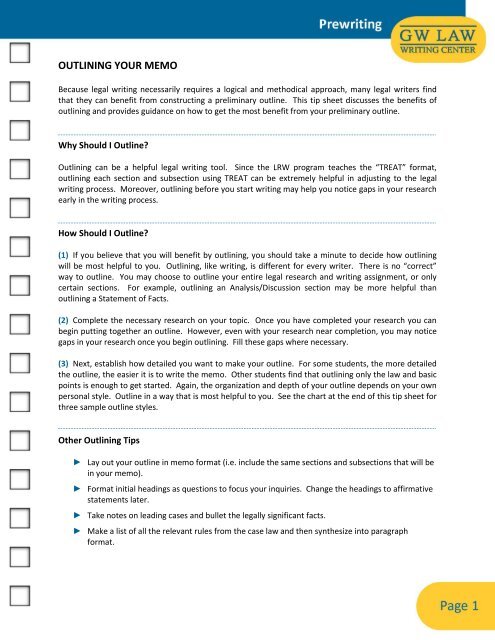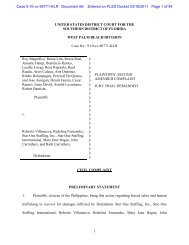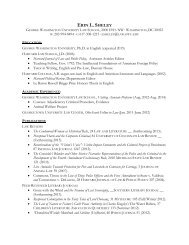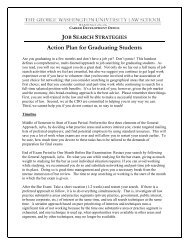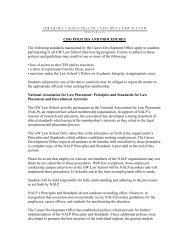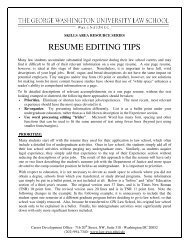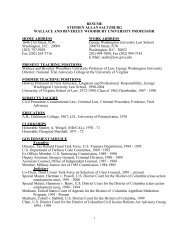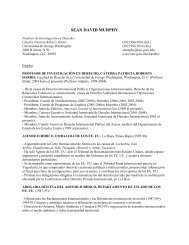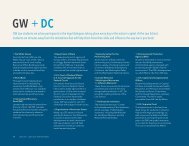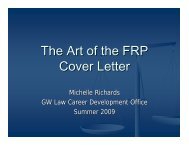Outlining Your Memo Tip Sheet
Outlining Your Memo Tip Sheet
Outlining Your Memo Tip Sheet
Create successful ePaper yourself
Turn your PDF publications into a flip-book with our unique Google optimized e-Paper software.
OUTLINING YOUR MEMO<br />
Because legal writing necessarily requires a logical and methodical approach, many legal writers find<br />
that they can benefit from constructing a preliminary outline. This tip sheet discusses the benefits of<br />
outlining and provides guidance on how to get the most benefit from your preliminary outline.<br />
Why Should I Outline?<br />
<strong>Outlining</strong> can be a helpful legal writing tool. Since the LRW program teaches the “TREAT” format,<br />
outlining each section and subsection using TREAT can be extremely helpful in adjusting to the legal<br />
writing process. Moreover, outlining before you start writing may help you notice gaps in your research<br />
early in the writing process.<br />
How Should I Outline?<br />
(1) If you believe that you will benefit by outlining, you should take a minute to decide how outlining<br />
will be most helpful to you. <strong>Outlining</strong>, like writing, is different for every writer. There is no “correct”<br />
way to outline. You may choose to outline your entire legal research and writing assignment, or only<br />
certain sections. For example, outlining an Analysis/Discussion section may be more helpful than<br />
outlining a Statement of Facts.<br />
(2) Complete the necessary research on your topic. Once you have completed your research you can<br />
begin putting together an outline. However, even with your research near completion, you may notice<br />
gaps in your research once you begin outlining. Fill these gaps where necessary.<br />
(3) Next, establish how detailed you want to make your outline. For some students, the more detailed<br />
the outline, the easier it is to write the memo. Other students find that outlining only the law and basic<br />
points is enough to get started. Again, the organization and depth of your outline depends on your own<br />
personal style. Outline in a way that is most helpful to you. See the chart at the end of this tip sheet for<br />
three sample outline styles.<br />
Other <strong>Outlining</strong> <strong>Tip</strong>s<br />
► Lay out your outline in memo format (i.e. include the same sections and subsections that will be<br />
in your memo).<br />
► Format initial headings as questions to focus your inquiries. Change the headings to affirmative<br />
statements later.<br />
► Take notes on leading cases and bullet the legally significant facts.<br />
► Make a list of all the relevant rules from the case law and then synthesize into paragraph<br />
format.
Sample <strong>Outlining</strong> Styles<br />
<strong>Memo</strong><br />
I. Thesis: Tunetaster will be<br />
held liable for breach of<br />
contract.<br />
Lay out discussion section<br />
in umbrella paragraph.<br />
A. Tunetaster could have<br />
reasonably foreseen<br />
the frustrating event.<br />
B. The value of<br />
Tunetaster’s<br />
performance will be<br />
totally or nearly totally<br />
destroyed<br />
<strong>Memo</strong><br />
I. Issue: Does P have an IIED<br />
claim?<br />
A. What are the<br />
elements of an IIED<br />
claim? Have they<br />
been satisfied?<br />
1. Has Element 1 been<br />
satisfied?<br />
2. Element 2…<br />
3. Element 3…<br />
4. Element 4…<br />
<strong>Memo</strong><br />
I. Thesis on the major issue.<br />
Rule: List elements<br />
A. Sub-thesis on Element A<br />
Rule:<br />
Explanation:<br />
Analysis:<br />
Restate Thesis:<br />
B. Sub-thesis on Element B


